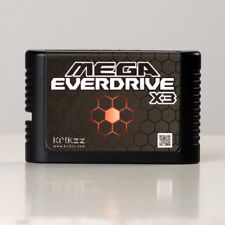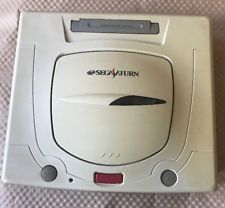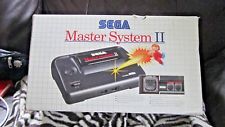|
April 14th, 2013, 22:40 Posted By: wraggster
 The Saturn was as famous for its lack of a proper, exclusive Sonic title (off-shoot Sonic R notwithstanding) as the Mega Drive was for having perhaps too many. But Sega never intended for the Saturn to lack the company’s mascot. The story of how the speedy blue hedgehog with the red shoes never found a proper home on Sega’s 32bit machine is one of indecision, conflict and confusion – problems that threatened to tear its internal development divisions apart.The lack of any binding vision for the game, or even a set console for it to play on, doomed Sonic X-treme from its very inception. It was a situation that Sonic X-treme’s eventual designer, Christian Senn, still sounds frustrated about: “We had a company that couldn’t decide what platform the game should be developed for. Should it be Genesis? Saturn? No, wait – the new secret Mars 32X system! No, wait – nVidia, Saturn, PC…”Sonic X-treme was a fitting symbol for a company that at the time was at stuck in an uneasy transition period. Developed at Sega Technical Institute, Sega’s America-based development division, the game was bounced around like a pinball from system to system, business plan to business plan. And its basic design, based almost entirely around Sonic’s past successes, simply wasn’t working too well.“The theme of the game was to take basic Sonic [2D side scrolling] and add the ability to have him go into and out of the screen,” recalls the game’s producer, Mike Wallis. “On paper that sounded great, but when we actually started to implement it, the addition created some design challenges we didn’t initially account for.” Console 3D graphics were in their infancy, and developers had much to learn about their effects on controls and game mechanics.But even without considering the difficulties of working in 3D, Senn is uncertain that the project could ever have succeeded. “It wouldn’t be a stretch to assume it was doomed from the beginning,” he admits. His team had never worked together before, and suffered from lack of experience. “The first Sonic games [from Sonic 2 onwards] had been created almost exclusively by Japanese team members led by Yuji Naka, but we were a totally separate group across the hall,” he explains. “This set up seeds of doubt and a political landmine waiting to go off if we didn’t produce amazing results quickly. It truly was a project where anything that could have gone wrong, did.” The Saturn was as famous for its lack of a proper, exclusive Sonic title (off-shoot Sonic R notwithstanding) as the Mega Drive was for having perhaps too many. But Sega never intended for the Saturn to lack the company’s mascot. The story of how the speedy blue hedgehog with the red shoes never found a proper home on Sega’s 32bit machine is one of indecision, conflict and confusion – problems that threatened to tear its internal development divisions apart.The lack of any binding vision for the game, or even a set console for it to play on, doomed Sonic X-treme from its very inception. It was a situation that Sonic X-treme’s eventual designer, Christian Senn, still sounds frustrated about: “We had a company that couldn’t decide what platform the game should be developed for. Should it be Genesis? Saturn? No, wait – the new secret Mars 32X system! No, wait – nVidia, Saturn, PC…”Sonic X-treme was a fitting symbol for a company that at the time was at stuck in an uneasy transition period. Developed at Sega Technical Institute, Sega’s America-based development division, the game was bounced around like a pinball from system to system, business plan to business plan. And its basic design, based almost entirely around Sonic’s past successes, simply wasn’t working too well.“The theme of the game was to take basic Sonic [2D side scrolling] and add the ability to have him go into and out of the screen,” recalls the game’s producer, Mike Wallis. “On paper that sounded great, but when we actually started to implement it, the addition created some design challenges we didn’t initially account for.” Console 3D graphics were in their infancy, and developers had much to learn about their effects on controls and game mechanics.But even without considering the difficulties of working in 3D, Senn is uncertain that the project could ever have succeeded. “It wouldn’t be a stretch to assume it was doomed from the beginning,” he admits. His team had never worked together before, and suffered from lack of experience. “The first Sonic games [from Sonic 2 onwards] had been created almost exclusively by Japanese team members led by Yuji Naka, but we were a totally separate group across the hall,” he explains. “This set up seeds of doubt and a political landmine waiting to go off if we didn’t produce amazing results quickly. It truly was a project where anything that could have gone wrong, did.” The team underwent frequent changes, and was cursed by inner conflict. Lead programmer Don Goddard was replaced with Ofer Alon, a decision that the former team members still disagree upon. Alon’s focus on programming for the PC with intent to port to the Saturn may have made sense in the light of Sega’s capricious approach to hardware, but when it came to porting, the team found it ran cripplingly slowly. Some members also claim Alon could be hard to work with and reluctant to show them how he was progressing.Senn has a different opinion, perhaps because he was the only one to regularly see Alon’s work, maintaining that it was never appreciated. “I remember the day [Sega of Japan president] Hayao Nakayama came to Sega Technical Institute to check on our progress,” he says. “By this time, the team had split into two distinct groups, both working on Sonic X-treme but not on the same version.”One group, composed of Alon and Senn, continued development of the engine, the editor and levels on the PC with the intention to port to the Saturn. The other group, Team Condor, was led by Robert Morgan and comprised everyone else. They used an old version of Alon’s editor to port directly to the Saturn. “Ofer and I planned to unveil our version when Nakayama-san came to see the Condor Team’s efforts,” Senn continues. “We missed our chance, though, when Nakayama-san came storming out practically cursing after seeing what they’d done.”The videos circulating around YouTube may justify Senn’s claim, although how well the code this footage shows would have eventually ported to the Saturn will probably never be known. After his visit, Nakayama ruled that the one part of the game he liked – the boss engine developed by Chris Coffin – was to become the base tech for the game.Such divisions within STI presented enough difficulties for the project, but the difficult relationship between Sega Of America and its Japanese parent didn’t help. Bernie Stolar had just moved from Sony to take over Sega Of America, and Wallis clearly remembers his desire to get the mascot character on to the Saturn in time for the Christmas of 1996. He allocated a specialised team to the project and asked what they needed to get it out in time. “I told him the team felt that with the Nights engine and development tools we’d have a much better shot of achieving our goal,” says Wallis. “He said to consider it done.” The team underwent frequent changes, and was cursed by inner conflict. Lead programmer Don Goddard was replaced with Ofer Alon, a decision that the former team members still disagree upon. Alon’s focus on programming for the PC with intent to port to the Saturn may have made sense in the light of Sega’s capricious approach to hardware, but when it came to porting, the team found it ran cripplingly slowly. Some members also claim Alon could be hard to work with and reluctant to show them how he was progressing.Senn has a different opinion, perhaps because he was the only one to regularly see Alon’s work, maintaining that it was never appreciated. “I remember the day [Sega of Japan president] Hayao Nakayama came to Sega Technical Institute to check on our progress,” he says. “By this time, the team had split into two distinct groups, both working on Sonic X-treme but not on the same version.”One group, composed of Alon and Senn, continued development of the engine, the editor and levels on the PC with the intention to port to the Saturn. The other group, Team Condor, was led by Robert Morgan and comprised everyone else. They used an old version of Alon’s editor to port directly to the Saturn. “Ofer and I planned to unveil our version when Nakayama-san came to see the Condor Team’s efforts,” Senn continues. “We missed our chance, though, when Nakayama-san came storming out practically cursing after seeing what they’d done.”The videos circulating around YouTube may justify Senn’s claim, although how well the code this footage shows would have eventually ported to the Saturn will probably never be known. After his visit, Nakayama ruled that the one part of the game he liked – the boss engine developed by Chris Coffin – was to become the base tech for the game.Such divisions within STI presented enough difficulties for the project, but the difficult relationship between Sega Of America and its Japanese parent didn’t help. Bernie Stolar had just moved from Sony to take over Sega Of America, and Wallis clearly remembers his desire to get the mascot character on to the Saturn in time for the Christmas of 1996. He allocated a specialised team to the project and asked what they needed to get it out in time. “I told him the team felt that with the Nights engine and development tools we’d have a much better shot of achieving our goal,” says Wallis. “He said to consider it done.”
http://www.edge-online.com/features/...sonic-x-treme/
For more information and downloads, click here!
 There are 0 comments - Join In and Discuss Here There are 0 comments - Join In and Discuss Here
|
|
 Sega Everdrive Flashcart
Sega Everdrive Flashcart






